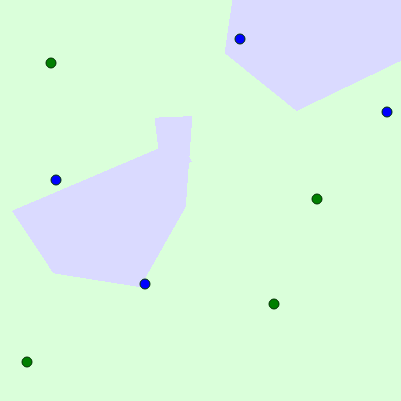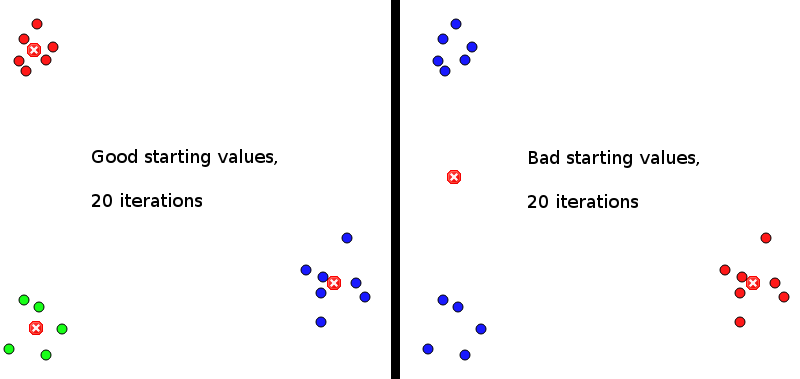When the circle has exactly the same number of blue / green dots in it, it will be green.
When you move the mouse over the box, everything will be calculated and drawn again. This leads to flickering with k-means, as k-means includes a random choice of cluster centers.
Changelog
| Version | Change |
|---|---|
| 2.2 | Cluster centers have the same color as the clustered points; when one cluster has no points (and there are at least as many points as clusters) everything gets recalculated |
| 2.1 | users can now specify an arbitrary number of classes; ctrl-key change of class was removed; added hints to configuration options |
| 2.0 | k-means implemented |
| 1.0 | k-nearest neighbor implemented |
Code is on GitHub. You may use it for free, but you should add a link to this article.
See also


- Voronoi diagram
- K-nearset neighbor
- k-means clustering
- Udacity: Introduction to A.I: k-means